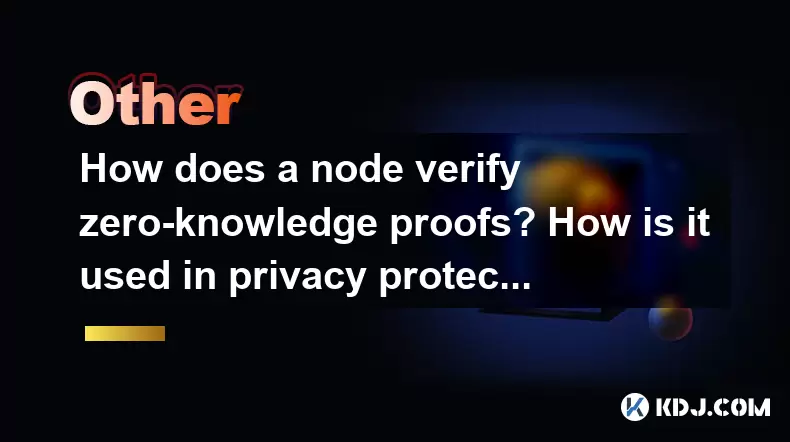-
 Bitcoin
Bitcoin $114800
-3.31% -
 Ethereum
Ethereum $3641
-5.84% -
 XRP
XRP $2.948
-6.36% -
 Tether USDt
Tether USDt $0.9998
-0.03% -
 BNB
BNB $772.4
-3.97% -
 Solana
Solana $169.1
-6.68% -
 USDC
USDC $0.9999
-0.01% -
 Dogecoin
Dogecoin $0.2056
-8.09% -
 TRON
TRON $0.3247
-0.18% -
 Cardano
Cardano $0.7239
-7.43% -
 Hyperliquid
Hyperliquid $39.71
-8.60% -
 Stellar
Stellar $0.3912
-7.84% -
 Sui
Sui $3.510
-10.17% -
 Chainlink
Chainlink $16.59
-8.03% -
 Bitcoin Cash
Bitcoin Cash $560.5
-3.65% -
 Hedera
Hedera $0.2464
-10.08% -
 Avalanche
Avalanche $22.03
-7.87% -
 Ethena USDe
Ethena USDe $1.001
-0.02% -
 UNUS SED LEO
UNUS SED LEO $8.947
0.21% -
 Toncoin
Toncoin $3.389
-2.58% -
 Litecoin
Litecoin $104.9
-5.23% -
 Shiba Inu
Shiba Inu $0.00001220
-6.67% -
 Polkadot
Polkadot $3.652
-6.10% -
 Uniswap
Uniswap $9.213
-9.05% -
 Monero
Monero $307.2
-2.93% -
 Dai
Dai $0.9998
-0.02% -
 Bitget Token
Bitget Token $4.367
-2.89% -
 Cronos
Cronos $0.1374
-6.80% -
 Pepe
Pepe $0.00001056
-8.65% -
 Aave
Aave $257.3
-7.31%
How does a node verify zero-knowledge proofs? How is it used in privacy protection?
Nodes verify zero-knowledge proofs in cryptocurrencies to ensure transaction validity without revealing sender, receiver, or amount, enhancing privacy and security.
May 16, 2025 at 03:36 am

Zero-knowledge proofs (ZKPs) play a crucial role in enhancing privacy and security within the cryptocurrency ecosystem. This article will explore how a node verifies zero-knowledge proofs and how this technology is used in privacy protection.
What Are Zero-Knowledge Proofs?
Zero-knowledge proofs are cryptographic methods that allow one party to prove to another that a given statement is true without revealing any information beyond the validity of the statement itself. In the context of cryptocurrencies, ZKPs enable transactions to be verified without disclosing the sender, receiver, or the amount being transferred.
How Does a Node Verify Zero-Knowledge Proofs?
A node in a blockchain network verifies zero-knowledge proofs through a series of steps designed to ensure the proof's validity without compromising privacy. Here’s how it works:
Receiving the Proof: The node receives a zero-knowledge proof from a user who wants to prove a certain statement without revealing any additional information.
Checking the Format: The node first checks if the proof is in the correct format. This involves verifying that the proof adheres to the protocol's specifications for zero-knowledge proofs.
Running the Verification Algorithm: The node then runs a verification algorithm on the proof. This algorithm is designed to check the proof's validity without needing to know the underlying secret. For example, in a zk-SNARK (Zero-Knowledge Succinct Non-Interactive Argument of Knowledge), the verification process involves checking a series of cryptographic equations.
Comparing with Public Parameters: The node uses publicly available parameters, which are part of the zero-knowledge proof system, to verify the proof. These parameters help the node confirm that the proof adheres to the system's rules without revealing any sensitive information.
Confirming Validity: If the verification algorithm outputs a positive result, the node confirms that the proof is valid. This means the statement being proven is true, but the node does not learn any additional information about the statement.
Use of Zero-Knowledge Proofs in Privacy Protection
Zero-knowledge proofs are instrumental in enhancing privacy within the cryptocurrency space. Here’s how they are used:
Anonymous Transactions: Cryptocurrencies like Zcash use zero-knowledge proofs to enable anonymous transactions. When a user sends Zcash, the transaction details are encrypted, and a zero-knowledge proof is used to verify the transaction without revealing the sender, receiver, or amount.
Shielded Addresses: In systems like Zcash, users can have both transparent and shielded addresses. Transactions involving shielded addresses use zero-knowledge proofs to ensure that the details of the transaction remain private.
Confidential Transactions: Some cryptocurrencies use zero-knowledge proofs to implement confidential transactions. In these transactions, the amounts transferred are encrypted, and zero-knowledge proofs are used to prove that the transaction is valid without disclosing the actual amounts.
Identity Verification: Zero-knowledge proofs can be used for identity verification in a way that does not reveal personal information. For instance, a user can prove they are over a certain age without revealing their exact birthdate.
Technical Details of Zero-Knowledge Proof Verification
Understanding the technical details of how a node verifies zero-knowledge proofs involves delving into the specific protocols used, such as zk-SNARKs and zk-STARKs. Here’s a closer look:
zk-SNARKs: zk-SNARKs are a type of zero-knowledge proof that is particularly efficient due to their succinctness. The verification process involves a series of cryptographic operations that can be performed quickly, making them suitable for blockchain applications. The node uses a verification key, which is part of the public parameters, to check the proof.
zk-STARKs: zk-STARKs are another type of zero-knowledge proof that is scalable and does not rely on trusted setups. The verification process for zk-STARKs involves checking a series of polynomial commitments, which can be done efficiently by the node.
Cryptographic Operations: Both zk-SNARKs and zk-STARKs involve complex cryptographic operations, such as elliptic curve pairings and polynomial commitments. These operations are performed by the node to ensure the proof's validity without compromising privacy.
Implementing Zero-Knowledge Proofs in Blockchain Networks
Implementing zero-knowledge proofs in a blockchain network requires careful consideration of the network's architecture and the specific use case. Here’s how it can be done:
Choosing the Right Protocol: The first step is to choose the appropriate zero-knowledge proof protocol based on the network's requirements. For example, if scalability is a priority, zk-STARKs might be preferred over zk-SNARKs.
Integrating into the Network: The zero-knowledge proof system needs to be integrated into the blockchain's consensus mechanism. This involves modifying the network's code to handle zero-knowledge proofs during transaction verification.
Ensuring Compatibility: The network must ensure that all nodes can verify zero-knowledge proofs. This involves distributing the necessary public parameters and verification keys to all nodes in the network.
Testing and Validation: Before deploying the zero-knowledge proof system, thorough testing and validation are necessary to ensure that the proofs are correctly verified and that the privacy features work as intended.
Practical Examples of Zero-Knowledge Proofs in Cryptocurrencies
Several cryptocurrencies have successfully implemented zero-knowledge proofs to enhance privacy. Here are some notable examples:
Zcash: Zcash uses zk-SNARKs to enable private transactions. Users can create shielded transactions where the transaction details are encrypted, and zero-knowledge proofs are used to verify the transactions without revealing any sensitive information.
Monero: While Monero primarily uses ring signatures for privacy, some proposals have explored the use of zero-knowledge proofs to further enhance privacy. These proofs could be used to prove the validity of transactions without disclosing the amounts involved.
Horizen: Horizen, formerly known as ZenCash, uses zero-knowledge proofs to enable private transactions. The network's privacy features are built on top of the zero-knowledge proof technology to ensure that transaction details remain confidential.
Frequently Asked Questions
Q: Can zero-knowledge proofs be used for purposes other than privacy in cryptocurrencies?
A: Yes, zero-knowledge proofs have applications beyond privacy in cryptocurrencies. They can be used for secure multi-party computation, identity verification without revealing personal information, and proving the correctness of computations without disclosing the underlying data.
Q: Are there any limitations to using zero-knowledge proofs in blockchain networks?
A: Yes, there are some limitations. Zero-knowledge proofs can be computationally intensive, which can impact the performance of the network. Additionally, the setup phase for some zero-knowledge proof systems, like zk-SNARKs, requires a trusted setup, which can be a potential point of vulnerability if not managed properly.
Q: How do zero-knowledge proofs impact the scalability of a blockchain network?
A: Zero-knowledge proofs can both positively and negatively impact scalability. On the positive side, they enable more efficient verification of transactions, which can improve scalability. However, the computational overhead of generating and verifying proofs can also pose scalability challenges, particularly for networks with high transaction volumes.
Q: Can zero-knowledge proofs be used to enhance the security of smart contracts?
A: Yes, zero-knowledge proofs can enhance the security of smart contracts by allowing the verification of complex computations without revealing the underlying data. This can be particularly useful in scenarios where privacy and security are paramount, such as in financial applications or voting systems.
Disclaimer:info@kdj.com
The information provided is not trading advice. kdj.com does not assume any responsibility for any investments made based on the information provided in this article. Cryptocurrencies are highly volatile and it is highly recommended that you invest with caution after thorough research!
If you believe that the content used on this website infringes your copyright, please contact us immediately (info@kdj.com) and we will delete it promptly.
- Bitcoin, Ethereum, and Investor Behavior: A New York Minute on Crypto Trends
- 2025-08-01 15:10:12
- Tether's Q2 Triumph: USDT Supply Soars Amidst Profit Surge!
- 2025-08-01 15:10:12
- Ethereum ETF Holdings: A Corporate Treasury Revolution?
- 2025-08-01 15:30:12
- Ethereum's Wild Ride: Funding Rates, Price Drops, and Retail to the Rescue!
- 2025-08-01 15:30:12
- Ethereum Under Pressure: Crypto Market Drop Explained
- 2025-08-01 15:35:11
- Ethereum ETF Mania: Inflows Surge, Market Rises, What's Next?
- 2025-08-01 15:35:11
Related knowledge

How to start a business using blockchain?
Jul 28,2025 at 12:36am
Understanding the Basics of Blockchain TechnologyBefore diving into the process of starting a business using blockchain, it's crucial to understand wh...

What is a token on the blockchain?
Jul 21,2025 at 07:00am
Understanding the Concept of a TokenIn the realm of blockchain technology, a token is a digital representation of an asset or utility that exists on a...

Can blockchain be used for identity verification?
Jul 18,2025 at 02:14pm
Understanding Identity Verification in the Digital AgeIn the modern digital landscape, identity verification has become a critical component for ensur...

What is a consensus mechanism in blockchain?
Jul 21,2025 at 03:01am
Understanding the Basics of Consensus MechanismsA consensus mechanism is a critical component of any blockchain network. It refers to the process by w...

How to explain blockchain to someone with no tech background?
Jul 18,2025 at 11:08pm
Understanding the Basics of BlockchainTo explain blockchain to someone with no tech background, it's essential to start with simple analogies and avoi...

Who invented blockchain technology?
Jul 23,2025 at 01:28am
Origins of Blockchain TechnologyBlockchain technology did not emerge from a single inventor or institution. Instead, it evolved through a series of ac...

How to start a business using blockchain?
Jul 28,2025 at 12:36am
Understanding the Basics of Blockchain TechnologyBefore diving into the process of starting a business using blockchain, it's crucial to understand wh...

What is a token on the blockchain?
Jul 21,2025 at 07:00am
Understanding the Concept of a TokenIn the realm of blockchain technology, a token is a digital representation of an asset or utility that exists on a...

Can blockchain be used for identity verification?
Jul 18,2025 at 02:14pm
Understanding Identity Verification in the Digital AgeIn the modern digital landscape, identity verification has become a critical component for ensur...

What is a consensus mechanism in blockchain?
Jul 21,2025 at 03:01am
Understanding the Basics of Consensus MechanismsA consensus mechanism is a critical component of any blockchain network. It refers to the process by w...

How to explain blockchain to someone with no tech background?
Jul 18,2025 at 11:08pm
Understanding the Basics of BlockchainTo explain blockchain to someone with no tech background, it's essential to start with simple analogies and avoi...

Who invented blockchain technology?
Jul 23,2025 at 01:28am
Origins of Blockchain TechnologyBlockchain technology did not emerge from a single inventor or institution. Instead, it evolved through a series of ac...
See all articles

























































































